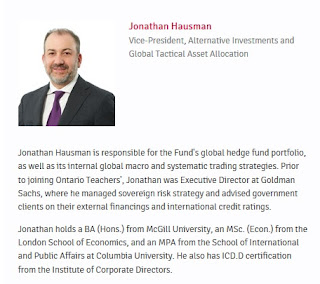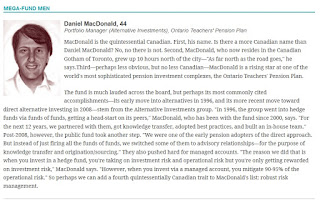Reporter Ed Mendel covered the Capitol in Sacramento for nearly three decades, most recently for the San Diego Union-Tribune. More stories are at Calpensions.com.
A CalPERS crackdown on employers that have not been paying into the pension fund could cut the pensions of all four retirees of a small Sierra County city, Loyalton, which stopped making its payments more than three years ago.
It would be the first time that CalPERS used its power to cut pensions, in proportion to the payment not made by the employer, after a plan is terminated and closed to new members, a CalPERS spokesman said.
The city council of financially troubled Loyalton voted unanimously to stop making payments to CalPERS in March 2013. The city had a population of 769 in the last census and is about a 45-minute drive from Reno.
Four Loyalton retirees have continued to receive full California Public Employees Retirement System pensions. Another former Loyalton employee is vested in a city pension but has not yet retired and applied for it.
To avoid deep pension cuts, Loyalton owes CalPERS a $1.66 million lump sum payment that cannot be made over time with installments. The city has talked about trying to get back into CalPERS or possibly obtaining a loan.
According to a state controller’s report for 2015, Loyalton had revenues of $1.17 million, expenditures $1.68 million, liabilities $6.16 million, assets $11.1 million, fund equity $4.8 million, and population 733.
In a “final demand letter” on Aug. 31, CalPERS gave Loyalton 30 days to “bring its account to current.” If the city does not pay the amount owed, the CalPERS board will be asked to declare Loyalton in default, which could trigger the pension cuts.
Loyalton city council members and their lawyer plan to meet with CalPERS officials this week. The CalPERS board is not expected to act on the issue until its regularly scheduled meeting in November.
CalPERS also sent a 30-day demand to two other employers that are inactive but not yet terminated: the California Fairs Financing Authority, a joint powers authority of the state and fairs owing $360,958, and the Niland Sanitary District, owing $23,795.
If the Fairs authority and the Niland district do not make the payment, CalPERS staff will begin termination proceedings and ask the CalPERS board to terminate their contracts at the November meeting.
The CalPERS plan for the Fairs authority, now operating as a private organization, would face a $9.4 million lump sum payment if terminated, according to its valuation report. It has 20 retirees, 14 transferred members, and 24 separated.
The Niland district, located at the south end of the Salton Sea, would face a lump sum payment of $88,000 if terminated, said its CalPERS valuation report. It has one retiree, one transferred member, and two separated.
Last week, the CalPERS board was told that a new policy has been drafted to speed up collections. The task also has been placed under new top-level supervision in the CalPERS bureaucracy.
“The whole contract area was just recently moved into the finance area because we recognize that there was some breakdown in making sure we get these collections sooner,” Cheryl Eason, CalPERS chief finance officer, told the board.

The deeply divided current members of the Loyalton city council agreed on one thing in telephone interviews last week: Two stone signs costing $10,000 each, telling motorists they are entering Loyalton, were not a good use of scarce city funds.
Some call them the “headstones.” Loyalton, which had a population of 1,030 in 1980, lost its main employer when the century-old Sierra Pacific lumber mill closed in 2001. An article in the Sierra County Prospect this year asked: “Is Loyalton dead?”
Loyalton is the largest and only incorporated city in Sierra County, population 3,240. A county history says it was carved out of Yuba County in 1852 because administration from Marysville in the Central Valley was too difficult.
The Sierra County seat is Downieville, population 282, about an hour drive (per Google maps) west of Loyalton on Highway 49. The county supervisors hold half of their meetings in Downieville and the other half in Loyalton.
A city council member who voted to terminate the CalPERS plan, Patricia Whitley, said a 50 percent pay raise that may not have been legitimate increased the cost of unaffordable pensions.
A city council member retired with a pension, John Cussins, who addressed the CalPERS board last week, said pay had been substandard before the pay increase, which was followed by a pay cut during the recession.
Some issues mentioned by Whitley and Cussins and Mayor Mark Marin: missing money, embezzlement, misuse of enterprise funds, illegal contracting, understaffing, employee turnover, a city museum building, and a city lawsuit over a troubled waste water project.
Cussins said he retired five years ago with a disability after more than 21 years as maintenance foreman playing a versatile role for the shorthanded city. He acted at times as a city manager or public works director, plowed snow, and dug graves.
Since retiring, Cussins said he has aided the city with drinking water maintenance and the use of his water and sewer licenses. His CalPERS pension last year was $36,034, according to Transparent California.
The large lump sum termination payment charged by CalPERS for five modest pensions, $1.66 million, results from a recent policy change. When a plan is terminated, CalPERS must pay the lifetime pensions with no more money from employers and employees.
CalPERS had used its investment earnings forecast, now 7.5 percent, to discount the terminated plan debt. Then in 2011, CalPERS dropped the terminated plan discount to a risk-free bond level (3.25 percent recently), causing the debt and termination fee to soar.
During the Stockton bankruptcy, a federal judge said a CalPERS termination fee that boosted the city’s pension debt or “unfunded liability” from $211 million to $1.6 billion was a “poison pill” if the city tried to move to another pension provider.
Several small cities that considered leaving CalPERS did not after looking at the high termination fee, among them Pacific Grove, Villa Park, and Canyon Lake. CalPERS has included a hypothetical termination fee in annual local government plan valuations since 2011.
Terminated CalPERS plans go into a pool that paid $4.7 million to 716 retirees and beneficiaries from 93 plans in the fiscal year ending June 30. The Terminated Agency Pool was 261.9 percent funded as of June 30, 2014.
CalPERS likes to keep a healthy surplus in the terminated pool for the same reason, some would say, that it lowered the discount rate and has the power to cut the pensions of underfunded plans that go into the pool.
If the Terminated Agency Pool falls short, the funds of all of the state and local government plans in CalPERS could be used to cover the shortfall — a big bite if a large plan entered the pool, which some feared in 2011 as the recession widened pension funding gaps.
A staff report to the CalPERS board last week said an underfunded plan that has not paid the fee can, after reasonable efforts to collect, enter the terminated pool with little or no cut in pensions if there is no impact on the pool’s “actuarial soundness.”
Whether Loyalton qualifies for this type of “limited” entry into the terminated pool is not clear. Sticking points for the CalPERS board might be the voluntary termination, years of ignoring collection demands, setting a precedent, and maintaining equal treatment of plans.
Putting a lien on Loyalton assets or attaching its revenue stream were mentioned at the CalPERS board last week. But taking revenue would further harm the financially distressed city, the board was told, and cities often are able to block attempts to attach their revenue.


